1. The distinctiveness of continuous patterns:
Continuous images or patterns utilized on merchandise or its packaging are normally considered as “decorative patterns”, the utilization of which often involves distinctiveness issues regarding trademark regulations. According to Article 18 of the Taiwan Trademark Act (the “Act”): “The term “distinctiveness” refers to the character of a sign capable of being recognized by relevant consumers as an indication of the source of goods or services and distinguishing goods or services of one undertaking from those of other undertakings.” If consumers are able to recognize or identify the provider of a product/service by examining the words or images on the product itself or on a related medium, these words or images will be considered as distinctive. Since distinctiveness is a fundamental requirement for a trademark, words or images lacking distinctiveness shall not be registered according to Article 29 of the Act. In addition, the competent authority for trademark registration (Taiwan Intellectual Property Office, TIPO) published the “Examination Guidelines on Distinctiveness of Trademarks” (the “Guidelines”) disclosing standards to follow when reviewing the distinctiveness of a trademark. Section 4.4.2 of the Guideline provides a definition for “ornamental patterns” as “a device consisting of various continuous and infinitely extendible patterns, natural objects such as flowers and grass, or geometrical shapes, which are likely to be considered an ornamental pattern on goods or the background or ornamental pattern on goods’ packaging. Normally, such a device is not used as a sign that identifies and distinguishes the source of goods or services, and thus is not distinctive.”
However, one may discover that purses, wallets and suitcases are often decorated with continuous and infinitely extended patterns or images, and relevant consumers are able to identify the source of such products based on the appearance of these patterns. Therefore it has become general practice in the leather goods industry to adopt trademarks in the form of continuous or repeated patterns or images. Accordingly, when conducting a trademark search, we discovered that trademark registrations in relation to purses or relevant products are allowed for registration, even if it is stated that such marks will be “extended to all or part of the product and are not limited to a fixed position or location.” Regardless of the aforementioned market status and previous trademark registration precedents, the real situation obviously diverts from the definition of “distinctiveness” as stated in the aforementioned Act and Guidelines. Therefore, the question remains whether it is possible to apply for trademark registrations in relation to purses and similar products with continuous patterns indicating a trademark.
2. Cases regarding the registration of continuous patterns:
(1) In an administrative judgment regarding trademark registrations in 2008 (Shin Shang Su Zu No. 19), the Taiwan Intellectual Property Court (the “TIPC”), TIPC considered the subject mark, which was designated to be used on leather goods, suitcases and briefcases as a “continuous decorative patterns” and “general consumers would normally consider such continuous pattern to be a design or decoration of the designated products, which consumers will not recognize as a graphic or text. Therefore the pattern would not cause relevant consumers to recognize said pattern as a mark of their product, or distinguish these products from others, and therefore it is not distinctive.” Thus TIPC maintained TIPO’s decision to refuse registration for the reason of “lack of distinctiveness”.

(2) In another judgment regarding a trademark registration in 2014 (Shin Shang Su Zu No.31), TIPC elaborated that the mark in question was a “continuous and infinitely extendible pattern for the appearance design of purses and bags. Objectively, continuous and infinitely extendible images along with the permutation of other images would not ensure general consumers to establish and recognize the origin of a product, but simply are a decorative pattern as part of a product’s appearance.” And this mark “lacks distinctiveness, since such a mark would give consumers the impression of being a decorative pattern or image on the designated products or their packaging, and is insufficient to make relevant consumers recognize such mark as an identification of products and distinguish these products or services from others.” Therefore TIPC refused registration of the mark.

(3) In another TIPC judgment in 2009 (Shin Shang Su Zu No.174) in a trademark invalidation dispute, the cited earlier used trademark (on the left) was not registered in Taiwan, and the owner of the invalidated trademark asserted that the cited earlier used mark was “just a decorative pattern on the clothes, not used as a trademark and is irrelevant to the trademark dispute.” However, TIPC points out that “it is not rare to use continuous and extendible patterns on purses and bags, and such patterns may also serve as a mark identifying the product and distinguishing it from others. Such trademarks not only acquired trademark registrations, but most of them have even become symbols of the trademark owner, by which general consumers can identify the source of the product, even if the trademark owner is not otherwise identified on the product”. Therefore TIPC invalidated the trademark registration for the reason of being confusingly similar to the earlier used famous mark.

3. Registration and use of continuous patterns.
Based on the above cited cases, we can infer that TIPO is likely to refuse trademark registrations for continuous decorative patterns on bags or purses for the reason of lack of distinctiveness. However, if such marks have been used on bags or purses in a manner of extending the mark repeatedly to the appearance of the product, not only does TIPC recognize such practice to be a manner of identifying products, but in addition TIPO also provided an example for trademark use on bags in its Explanations on the Use of Registered Trademarks by saying that: “The perception of relevant consumers is also one of the important factors in judging whether an ornamental design may serve as evidence of use of a registered trademark. For example, the repeating pattern of an ornamental design on the surface of a leather bag was deemed non-distinctive and therefore unregistrable as a trademark. However, through long and extensive use by the bag manufacturer, the ornamental design had become recognizable to relevant consumers as a trademark and acquired distinctiveness, therefore registration was granted. Later, a leather bag was submitted as evidence in support of trademark use after registration. Although the registered trademark was displayed as a repeating pattern on the surface of the entire leather bag, such evidence was admissible because relevant consumers had come to recognize such repeating pattern as a trademark.” In conclusion, once the trademark is allowed registration on the ground of acquired distinctiveness, the continued usage of such a mark in a repeating manner will not be considered as a decorative pattern on the product, but is recognized as a manner of trademark usage. We hereby provide several examples for trademark registrations of repeating patterns appearing on leather goods:
| Taiwan Trademark Reg. No. | Trademark Image | Product |
| 905930 |  |
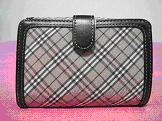 |
| 1552675 | 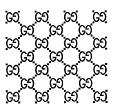 |
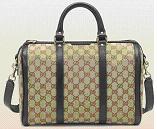 |
| 1342880 |  |
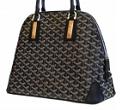 |
| 1074587 |  |
 |
| 1360366 | 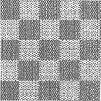 |
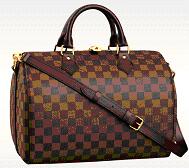 |
| 1278906 |  |
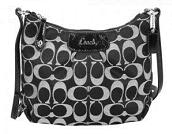 |
4. The acquired distinctiveness of continuous patterns:
In the aforementioned administrative judgment of TIPC in 2008 (Shin Shang Su Zu No.19), TIPC concluded that the mark in dispute had not become well recognized in the trade by their use in Taiwan, after reviewing the provided product catalog and trademark registrations acquired in other countries. In another administrative judgment of TIPC in 2014 (Shin Shang Su Zu No.13), TIPC found that the plaintiff did not use the mark in dispute as a means of identification of their products, but used another mark “kinaz” as their trademark and to identify the source of their products. TIPC also stated that: “The pattern on the plaintiff’s handbag consists not only of the trademark in dispute but of other patterns as well, and both of them are used in a continuous manner. Therefore the trademark in dispute will not leave an impression on relevant consumers or provide an image whereby the source of the product can be identified. The sales data provided by the plaintiff was insufficient to prove that the trademark in dispute has acquired distinctiveness.”
According to the above, registration applications for continuous patterns are generally refused for lack of inherent distinctiveness. Therefore, applicants should provide long-term advertising and promotion materials as evidence of use and prove that such pattern has acquired distinctiveness during the registration process. These materials should clearly prove that such patterns have been used solely on their products, and relevant consumers are able to distinguish the origin of the product or service based on these patterns. Section 5 of the Guideline (provision and establishment of evidence) elaborates that: “The determination of distinctiveness acquired through use is based on the recognition of local consumers. Thus, the evidence provided by the applicant should be mainly material relating to domestic use. If materials relating to foreign use are provided, they are acceptable only if relevant local consumers have knowledge of such use in a foreign country.”
As for the eligible evidence, the applicant is encouraged to provide materials that can prove the manner of use of the trademark, the length of time of such use; quantity and amount of sales, market share; volume and costs of advertisement, materials for promotional activities; sales territory, marketing distribution, points of sales or display; registration certificates issued in different countries; market research reports; news reports regarding trademark applications; certificates issued by relevant agencies; supporting evidence from business partners and other evidence of acquired distinctiveness. Regarding the example of pictorial trademarks, the applicants should beware that when such a trademark is not used alone, but in combination with another mark, materials showing such a combined use may serve as evidence of use relating to the trademark to be registered, but the trademark will be deemed registrable only if it is distinctive by itself without the other trademark. When a trademark to be registered is usually used together with another trademark, more evidence of use is usually needed to prove its distinctiveness.
In conclusion, TIPO and TIPC did not exclude continuous patterns from acquiring trademark registrations if they are distinctive when used on leather goods. However, owners of continuous patterns should ensure that relevant consumers recognize such patterns as trademarks and should rely on the mark as means of identification of their products through active and extensive use or promotion. Owners of continuous patterns should also provide specific and sufficient evidence of use when applying for trademark registrations to increase the chance of being allowed registration on the basis of acquired distinctiveness.
